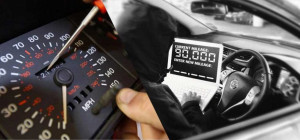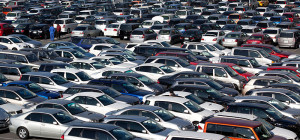 Drunk driving is a serious and dangerous business. Drivers having high BAC (Blood alcohol concentration) run high risks of running into a crash. So better avoid them as much as possible.
Drunk driving is a serious and dangerous business. Drivers having high BAC (Blood alcohol concentration) run high risks of running into a crash. So better avoid them as much as possible.
But how can you avoid them if you can’t even recognize a drunk driver from signs of his/her driving? A police officer is trained to identify these signs on basis of which s/he makes his/her further investigations.
H/She usually follows a set of rules as defined by NHTSA (National Highway Traffic Safety Administration) to identify drunk drives. You can also follow the same to identify drunk drivers on road when their vehicles are in motion. Take a peek.
1. Difficulty in staying within the driving lane
Drivers under intoxication face a great deal of difficulty to maintain a steady and consistent position on the road. They usually move randomly between driving lanes.
Some common indicators that you can follow to identify these vehicles in motion are:
- Weaving dangerously through traffic. The suspected vehicle can even strike other vehicles in the process that are outside its respective driving lane.
- Driving with a set of wheels on the wrong side of the line.
- Swerving hard and making abrupt turns to straighten the vehicle.
- Drifting consistently to a specific side of the road.
- Making an excessively wide turn that looks too unnatural to the eye.
2. Braking difficulties
Drunk drivers usually face a significant amount of difficulty with judging a vehicle’s speed and distance at the time of the drive. They fail to stop the vehicle properly at times when they should (one of the most common reasons behind an accident).
Common signs include:
- Coming to a halt at an odd angle.
- Stopping the vehicle at an unnaturally large distance away from the curb.
- Quick, jerky and short stops at regular intervals (one of the most common signs to look out for).
- Stopping well beyond a line of limit (for example a crosswalk).
Some common acceleration related issues in relation to intoxication include things like:
- Sudden and unexpected acceleration/ deceleration for no reason whatsoever.
- Varying degrees of speed that looks too unnatural to the eye. Speeding up suddenly and slowing down suddenly for no apparent reason whatsoever.
- Driving well below the speed limit or significantly above the limit.
Keep an eye out for these signs and take evasive actions as soon as you suspect one. And don’t forget to inform the authorities as soon as you suspect a drunk driver.
3. Issues with awareness and vigilance of driving conditions
Drunk drivers face a lot of issues with driving conditions because they are too disoriented to notice the conditions of traffic on the road. The signs usually include things like:
- Driving in the wrong direction or on the wrong route.
- Delayed response to on road traffic signals.
- Slowing down or halting for no reason whatsoever.
- Using wring turning signals when changing lanes.
- Driving in the dark without turning the headlights on.
4. Judgment difficulties during the drive
Driving any vehicle involves making a constant set of judgments. A driver should be alert and must be able to gauge distance and speed properly and effectively.
This becomes specifically very difficult under the influence of alcohol. Drivers, under intoxication tend to be more flippant. Hence, it’s advisable to keep an eye out for these signs:
- When a driver is following another vehicle too closely. Tailgating, to be more specific.
- Making sudden and illegal turns with zero regards to the law.
- Erratic and unsafe lane changes. It can be too quick or too slow. Both can signify a driver under intoxication.
- Driving well off the road.
- Impairment in appearance. Example: Head drooping and falling to one side.
Lastly, I would like to point out a few more obvious signs through which the authority confirms drinking and driving situations. These include things like:
- Slurred speech,
- Alcoholic odor and open alcoholic beverage bottles inside the vehicle.
- Extremely slow response in answering questions.
- Poor motor skills such as fumbling with identification documents, leaning on vehicles, facing difficulty in getting out of the vehicle.
A final word of advice…
If you ever suspect that a vehicle is driven by a driver under intoxication, do take immediate measures to get to a safe distance as soon as possible. Call 911 and inform them of the situation. If possible, include the suspected vehicle’s number in your information. That can actually make their tasks easier and more convenient.
Contributed by:http://www.texas-truckaccidentlawyer.com/







